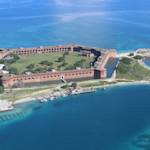Havana, world leader in urban agriculture
2012 CE • Havana, Cuba
"Considered by urban biodiversity and sustainability experts to be a leading model of urban agriculture, Havana has at least 30% of all its available land under cultivation . . . Policy measures, such as creative use of spaces for urban farming, planning farmers markets, and setting policies on food-species biodiversity have helped continually expand Havana’s urban agriculture. The impacts have been huge: a city of more than 2 million people with thousands of urban farms and community gardens, Havana has been able to produce between 45% to 100% of its fresh vegetables (various annual estimates), and up to 20% of the national fresh food total . . . The benefits of urban agriculture in Havana have been extensive: higher resilience of food supply chains; boosted public health: particularly via improved nutrition due to greater access to food, and more available, less expensive, fresh vegetables, water and waste management improvements; biodiversity conservation: urban agriculture has preserved rarer plant species once part of the traditional Cuban diet but no longer found in rural agriculture . . . reduced energy use; employment creation; [and] reduction of fossil-fuel use."
Aaron Thomas, "Havana urban farming," World Wildlife Fund, March 1, 2012.
Image: Arnoud Joris Maaswinkel, CC BY-SA 4.0, via Wikimedia Commons


Learn about Maya Lin’s fifth and final memorial: a multi-platform science based artwork that presents an ecological history of our world - past, present, and future.

Discover ecological histories and stories of former abundance, loss, and recovery on the map of memory.

Learn how we can reduce our emissions and protect and restore species and habitats – around the world.

See how art can help us rethink the problems we face, and give us hope that each one of us can make a difference.

Help make a global memorial something personal and close to home. Share your stories of the natural world.


